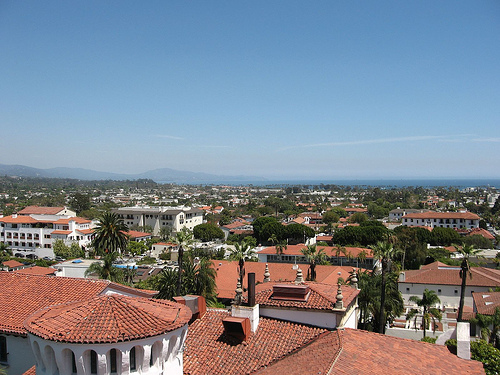From Red Tiles to Green Roofs
Can We Get There from Here?

Sustainability is steadily becoming the new norm in construction and development, for good reason: The global climate is steadily changing and new stories about contaminated or radioactive areas of the earth keep popping up, shifting public sentiment toward being as ‘green’ as possible. With solar cells and green roofs becoming ever more common, cities across the world are being peppered with shiny new buildings that can boast carbon neutrality and waste-heat recovery systems.
And while certainly a step in the right direction, these buildings are more or less the easy part of sustainable development. A brand-new project can be built from the ground up using the most efficient methods of the time, but the real challenge comes from retrofitting existing buildings to sustainable standards.
The biggest problem with this approach is not lack of technology, but rather a lack of incentive.
We’ve all heard of double-paned windows and low-flow shower heads, but how many of us actually have them in our homes? What about high-efficiency washing machines or backyard compost bins?
A small portion aside, the rest of us don’t have these modern wonders for a simple reason: They’re expensive. Hooking an average home up to solar panels can cost up to $10,000, and re-insulating that same home will cost another few thousand.
So what’s the point? Why should individuals be pressured to spend money on these luxuries? Environmental concerns aside, remodeling a home with these and other efficient designs generally saves money in the long run. And of course, from the ecological point of view, we have a certain responsibility to the planet and ourselves to keep nature as clean as possible.
If the cost of renovation can be almost guaranteed to be returned, how can we justify the continued use of inefficient buildings and technologies? Every time we leave our incandescent lights on, a little more carbon is released into the air, the global temperature gets a little warmer, and the oceans get a little higher – all for the sake of saving a few dollars on the cheaper light bulbs, instead of buying fluorescents or leds.

It’s a frightening reality, but one that can be remedied with our own actions.
Cities like Santa Barbara have an added complexity to them, being that we have a very well-defined image and want to keep it that way. People visit expecting to see terracotta and palm trees, not solar panels and compost heaps. I’m not saying we should bulldoze the Mission Santa Barbara and put in a wind farm, quite the contrary. It is possible to blend the classic and the modern into a unique, and still aesthetically pleasing, style.
For inspiration, we can look all the way to Scotland’s Glasgow, which recently released a 50-year “Future Glasgow” plan, with strategies for dealing with energy and carbon, that will boost them into sustainability fame for years to come. And if Glasgow can integrate energy grids with gothic cathedrals and buildings older than our nation, we can do it with stucco walls and red roof tiles. Furthermore, environmentally-friendly structures fit perfectly with our city’s well-known love of nature. Seeing someone compost food scraps shouldn’t be any more surprising than seeing them with a reusable coffee mug.
The reason Glasgow and other cities around the world are evolving into these sustainable cities is public desire. In the end, it comes down to what the people want, and it seems the Scots chose sustainability. Every other city in the world will soon have to make the same choice, and every other reasonable city will go the way of Glasgow. We will be shifting eventually as well, so how about we start now and make Santa Barbara the Green gem of the West Coast.



